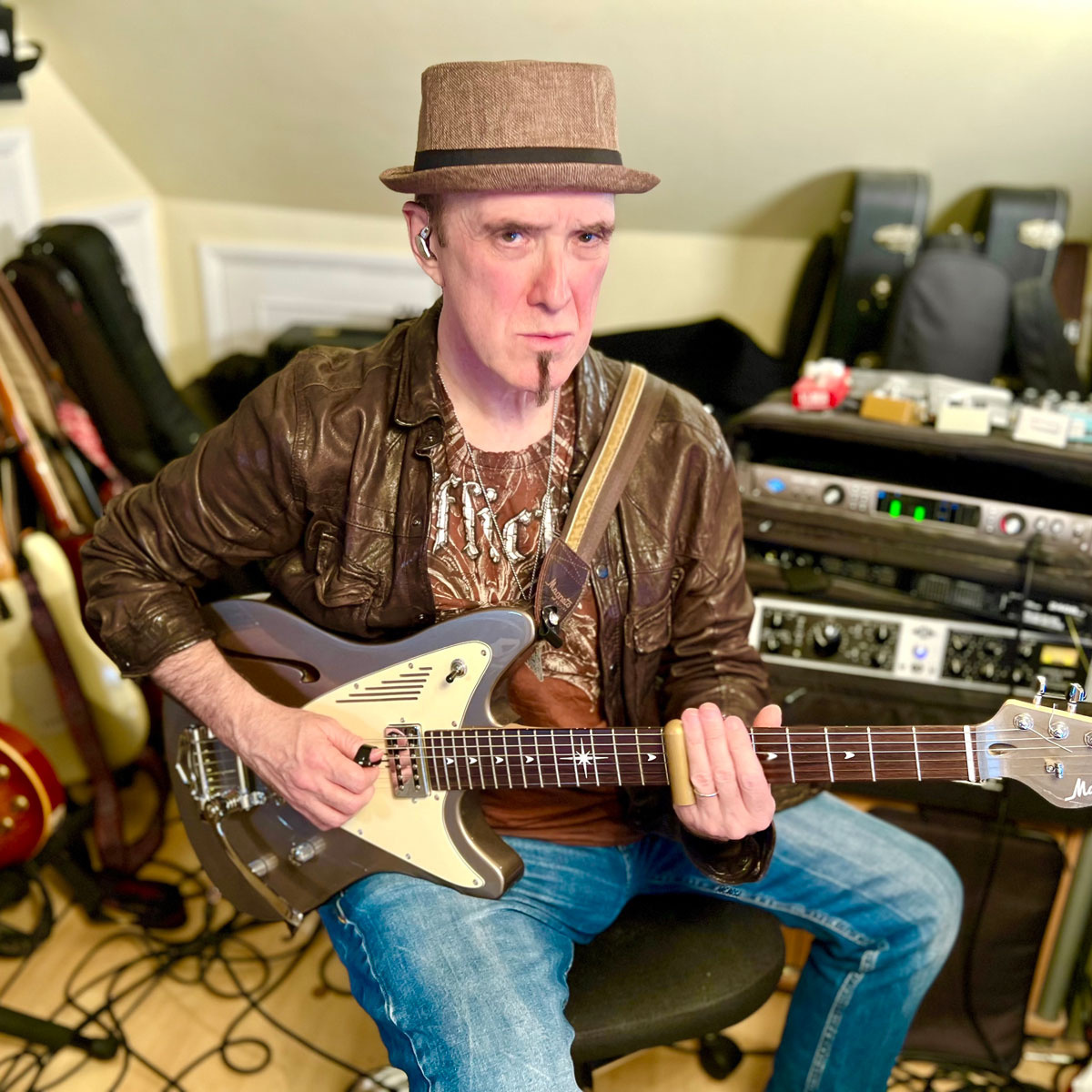Brian Setzer is a Gretsch-toting guitar god who breathed new life into rockabilly with fresh picking approaches and Bigsby swagger
Brian Setzer mixes jazz, swing and rock 'n' roll for a sound that's all his own. This lesson unpacks his soloing style so you crazy cats won't stray on the fingerboard

Brian Setzer revitalised the rockabilly scene with his band The Stray Cats in the early 1980s, during the time he was living in the UK. After the initial success of the band and his various solo projects, Setzer had a fantastic second wind with his Brian Setzer Orchestra which adds jazz and swing influences to the rockabilly core.
A jazz enthusiast from an early age, Setzer blends Charlie Christian-tinged inflections into his lines and shows a sophisticated way of navigating the chord changes. This approach is not that surprising for a rockabilly player, but the more complex music that his band plays really brings this aspect of Brian’s playing to the fore.
In the big band setting, Setzer is very involved in the arranging process and his obvious grasp of the harmony is again displayed in some lovely chord melody moments. Setzer is one of those players that uses a particular kind of guitar and its sound is difficult to emulate on another type of instrument. His Gretsches generally have Bigsby vibrato arms – a big part of his sound.
Musically he often demonstrates bolder use of chromatic notes than you might expect from this style. However, some of the early rockabilly players also used lines that elegantly observed the chord changes.
These often use the ‘Bebop’ scale, an amended form of the Mixolydian mode where the major 7th degree is added between the root and the b7. It’s one surefire way to know that you’re using chromatic notes that will work on a standard dominant 7th. Brian’s approach is organic but it’s also obvious that he has seriously worked at his understanding of jazz harmony.
Another element of Setzer’s playing is the blues guitar phrasing and blues-influenced string bends. Country guitar influences are also in evidence. Travis picking is common in both straight rockabilly and traditional country guitar styles. And in his 1981 classic, Stray Cat Strut, Setzer breaks out some really ear-catching economy picking – that’s certainly what it sounds like, but if it’s turbocharged alternate picking then that’s even more impressive!
In country, western swing and rockabilly styles it’s common for players to use hybrid picking – a combination of pick and fingers that really helps with double-stop playing, small chord fragments, and string crossing for arpeggios. It’s best to hold the pick as you normally would but grab at the strings with the other fingers. This is an approach that would have grown out of the demands of the music.
If you’re playing Travis picking accompaniment patterns (as Setzer often does) while also playing conventionally with a pick, it’s easy to bring the other picking fingers into play when needed. If you adopt this approach, aim to keep the picking hand relaxed, as it can be easy to tense up.
Get the tone
Amp Settings: Gain 4, Bass 7, Middle 4, Treble 6, Reverb 4
A clean American guitar amp sound drenched in reverb and slap-back echo is a good place to start. Treble or middle pickup will help you cut through, although for the jazzy parts, the neck pickup can be better. Just a touch of overdrive will add a bit of authentic grit to you sound. On held chords, a little waggle on the vibrato arm would be in character with Brian’s vibe.
Example 1. Minor key workout
Brian might scrape muted notes across adjacent strings before hitting the quarter (crochet) notes. Watch your timing, don’t rush, and play with attitude.
Example 2. Chromatic ‘spice’ notes
Using chromatic notes to spice up a simple minor pentatonic idea works great. This lick ends with some classic double-stop ideas.
Example 3. Ascending repeated pattern
This a classic rockabilly move going up chromatically using a repeating pattern. Jimmy Page, a huge rock and roll fan, also used this approach with Led Zeppelin.
Example 4. Two-string pull-offs
This one’s a little tricky as it uses pull-offs on two strings by covering them with one fretting-hand finger. It sounds best if the amp is cranked a little bit.
Example 5. Economy picking
Try economy picking in places like bar 3, one stroke across several strings (useful for arpeggios). Note the chromaticism provides b3, 3 plus #4, b6,b7 and 7. Colourful!
Get The Pick Newsletter
All the latest guitar news, interviews, lessons, reviews, deals and more, direct to your inbox!
A professional guitarist for many years, Andy G Jones has played with Van Morrison, James Ingram, Lamont Dozier, Queen (Brian May and Roger Taylor), Robben Ford, Billy Cobham, John Illsley (Dire Straits), KT Tunstall, Albert Lee (featured on Andy's upcoming CD), Mike Finnigan, Dave Landreth and Ryan Voth from The Bros. Landreth, Malford Milligan, The BBC Radio Big Band, Patti Austin, Hamish Stuart (Average White Band), Lalo Schifrin (Hollywood film composer Bullitt, Mission Impossible), Hank Marvin, James Dean Bradfield (the Manic Street Preachers), Grady Tate, Agnetha from ABBA, Cliff Richard, Dudley Moore, Nathan James (Inglorious), Joey Tempest (Europe) and Kelsey Grammar.
“I suppose I felt that I deserved it for the amount of seriousness that I’d put into it. My head was huge!” “Clapton is God” graffiti made him a guitar legend when he was barely 20 – he says he was far from uncomfortable with the adulation at the time
“I was in a frenzy about it being trapped and burnt up. I knew I'd never be able to replace it”: After being pulled from the wreckage of a car crash, John Sykes ran back to his burning vehicle to save his beloved '76 Les Paul









![Joe Bonamassa [left] wears a deep blue suit and polka-dotted shirt and plays his green refin Strat; the late Irish blues legend Rory Gallagher [right] screams and inflicts some punishment on his heavily worn number one Stratocaster.](https://cdn.mos.cms.futurecdn.net/cw28h7UBcTVfTLs7p7eiLe.jpg)


